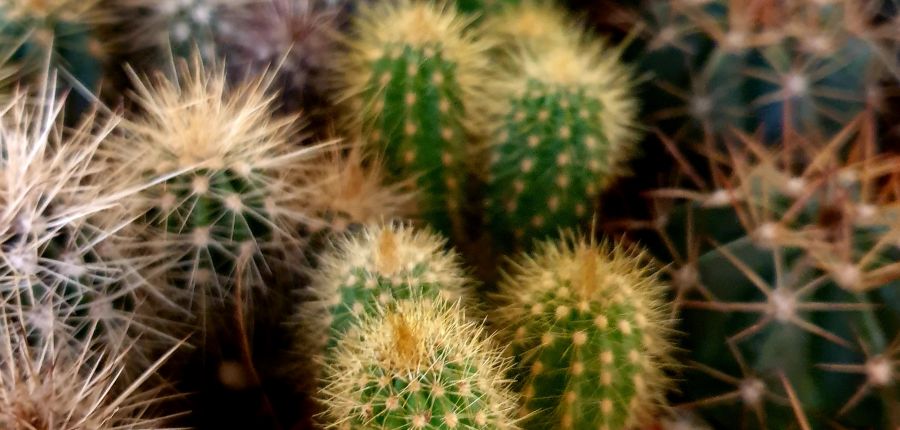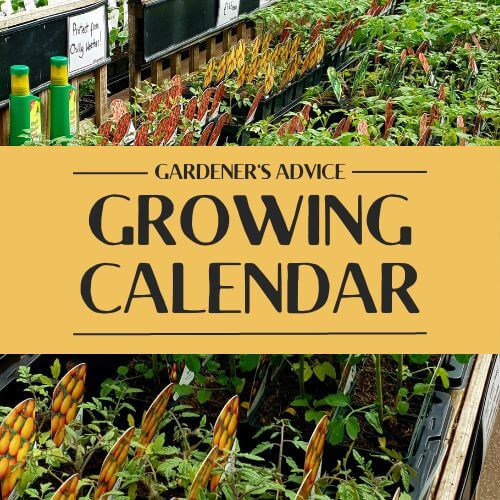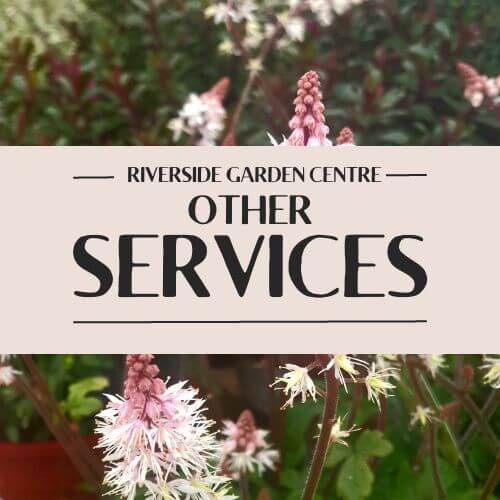Introduction to Houseplants
Posted By: Category: HouseplantsHouseplants are great way to bring a little bit of green into your home! Here are some key points to get you started:
- Pot covers are for decoration. A plant needs to have drainage (holes at the bottom of a plastic pot) and so place the pot your plant comes in, into a decorative pot. If it is planted straight into a decorative pot, it is difficult to see if water is gathering at the bottom or if your plant needs re-potting and will lead to root rot.
- When to re-pot? As the plant grows, it will need to be re-potted into a larger pot (about 5cm extra diameter). You can see when the roots are curling around the edge of the pot and especially if the roots begin to grow through the base of the pot, you plant is pot-bound. The best time is to repot is in spring/summer and use a houseplant compost (or cacti/orchid for these plants).
- The best place isn’t always the window! - Houseplants do need sunlight, but most do not like direct sunlight (indirect is preferred) as it can scorch their leaves. Again, it will depend on the plant, but keep an eye on your new plants and move if their leaves are going brown. The best houseplants for a windowsill would be cacti, most succulents or sansevieria (not fussy).
- How often should I water it? Many plants will have a guide to how often it should be watered, but depending on its environment, growth, and time of year, this isn’t always recommended. The best way to tell if you houseplant needs watering is to test the soil yourself. Put your finger into the top of the soil, about an inch in. If compost sticks to your finger and feels damp, it doesn’t need watering yet. You can also test the weight – a light plant will have dry compost.
- The best way to water your plant is over the sink. Place the plant in your sink (or bath), out of its decorative pot, and water it until it consistently pours through. Leave the plant there for 15 minutes before putting it back on display. This will help prevent root rot. They also love rainwater if you are able to collect it – they can react to the chemicals in tap water. Alternatively, letting tap water rest over night before watering your plants is better than straight out the tap. Most plants are happy to be watered from above, hairy or thick foliage covering the compost prefer from below (in a tray).
- Many plants enjoy a little mist now and again, just as you remember. Most plants like a humidity and this can help compensate for indoor living. Do not mist flowering plants or those with velvety leaves. Another way to create more humidity is to keep your plant in a tray with gravel and water – as the water evaporates, it will create humidity.
- Feeding is a great way to help your houseplant grow in the warmer months. Feed about once a month in spring and summer and cut down to once every 2 or 3 months when it gets colder. You can get premixed feeds, feed you mix with water and mist feeds. Like normal misting, don’t mist flowering or velvety plants with feed.
General guide to why your plant is looking sick!
- The biggest killer on house plants is overwatering! They begin to wilt, leaves yellow and new growth dies off. If you think you have overwatered your plant, let it fully dry out before going back to watering.
- Underwatering will also cause the plant to wilt and the leaf tips will brown. Let it stand in water for 30 mins and then let it drain. Misting can also help prevent underwatering.
- Pests – There a few different pests you may become aware of, but they are usually treatable. However, the best way is to prevent them by keeping a healthy plant.
- Too much sun can cause the scotching of leaves (leaf burn). They will turn the leaves brown and crispy.
- As the plant grows, it is going to need extra space. Signs your plant needs repotting includes the roots begining to show on the edge of the compost, yellowing leaves and leaves droping off. It is best to repot at the begining of Spring as your plant will do most of its growing during the warmer months.
Handout available at Riverside or downloadable from the link below!
--> DOWNLOAD









